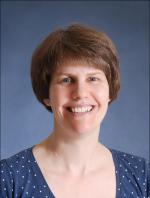- 2012- Professor, Physics and Astronomy, UBC
- 2007- 2012 Associate Professor, Physics and Astronomy, UBC
- 2002-2007 Assistant Professor, Physics and Astronomy, UBC
- 2000-2002 Research Associate, NRAO-Green Bank, W.V.
- 1998-2000 Postdoctoral Fellow, Jodrell Bank Observatory, U.K.
- 2017 Royal Society of Canada Rutherford Memorial Medal in Physics
- 2017 Canadian Astronomical Society Peter G. Martin award for Mid-career Achievement
- 2014- Senior Fellow, Canadian Institute for Advanced Research Cosmology & Gravity/Gravity & Extreme Universe programs
- 2010-2013 NSERC Discovery Accelerator Supplement
- 2002-2007 NSERC University Faculty Award
- 2000-2002 Jansky Research Associateship, NRAO
- 1998-2000 NSERC Postdoctoral Fellowship
- 1993-1997 NSERC 1967 Scholarship
- 1993 Joseph Henry Award, Princeton University
My work involves the observation of radio pulsars and their companions, with a general theme of studying binary pulsar evolution, and with additional work in such areas as pulsar instrumentation and polarimetry, and some observations at other wavelengths. Recently I have become interested in radio transients including Fast Radio Bursts.
Pulsar Searches: Large-scale pulsar surveys are underway using the 305-m Arecibo Telescope in Puerto Rico and the 100-m Green Bank Telescope in West Virginia, aiming to understand the pulsar population, find new exotic binaries and add new pulsars to the NANOGrav experiment.
Pulsar Timing: Finding pulsars in surveys is only the first step in their study -- the science comes out of long-term timing follow-up of these rapidly rotating neutron stars. Some of the particular objects I follow include a young pulsar with a companion of 11 solar masses, for which we are trying to understand the orbital dynamics and the interaction between the two stars; a young pulsar that switches emission states; a "missing-link" pulsar/X-ray-binary system and several double-neutron-star binaries that allow stringent tests of general relativity. I'm also interested in trying to derive stellar masses and understand different evolutionary theories through long-term observations of pulsar--white dwarf binaries. A long-term goal, sought as part of the NANOGrav collaboration, is the direct detection of gravitational waves using multiple pulsars.
Fast Radio Bursts (FRBs): These millisecond-duration bursts of radio emission are extragalactic in origin but their source is still unknown. I am part of a team installing a powerful FRB detector on the upcoming CHIME telescope; we expect to see up to a few tens of FRBs per day and examine the brightest ones with high time resolution and polarimetry.
Instrumentation: Better instruments yield better timing precision and hence higher-quality science. I have been involved in assembling coherent-dedispersion instruments for Arecibo and Green Bank, and am currently managing the installation of a 10-beam pulsar instrument on the upcoming CHIME telescope.
